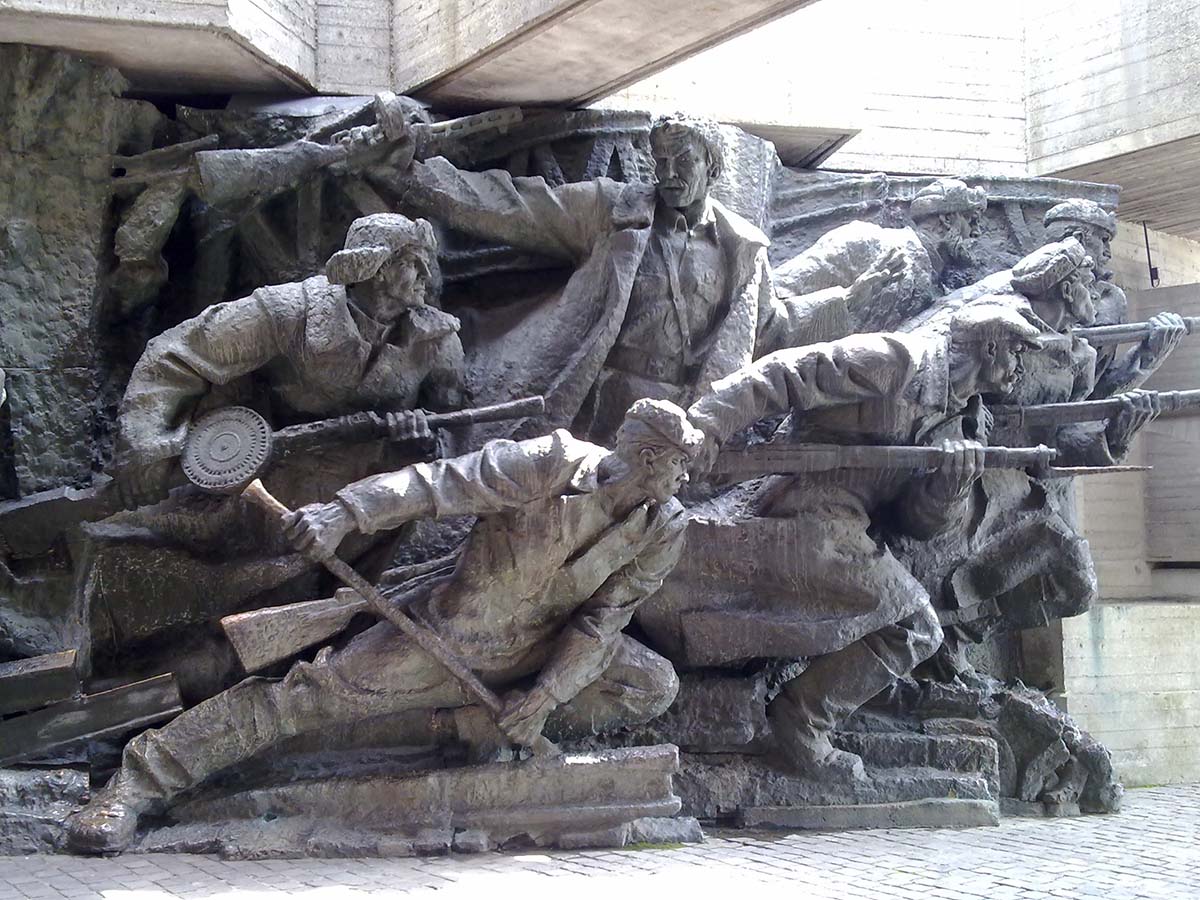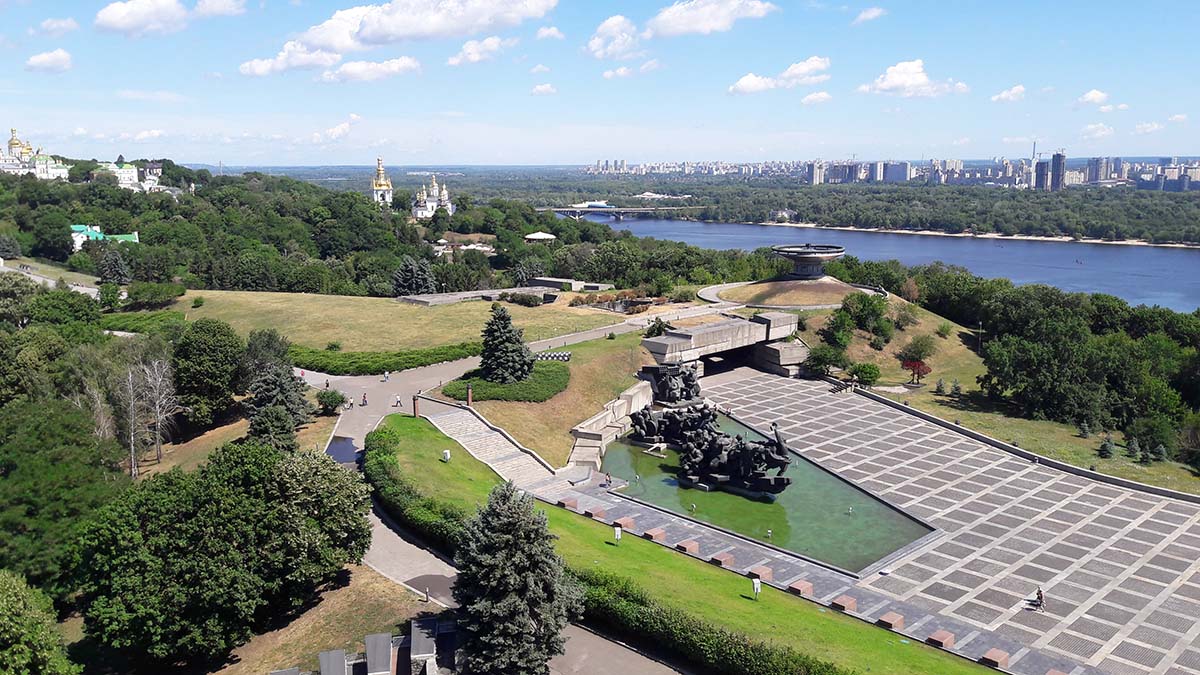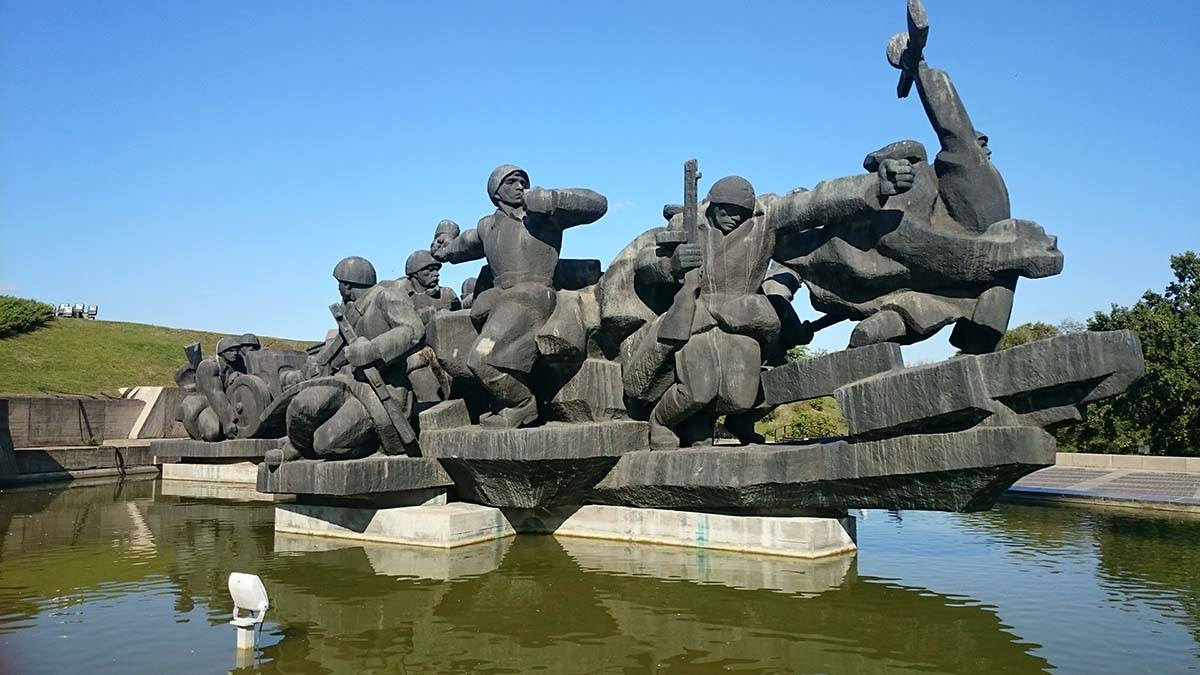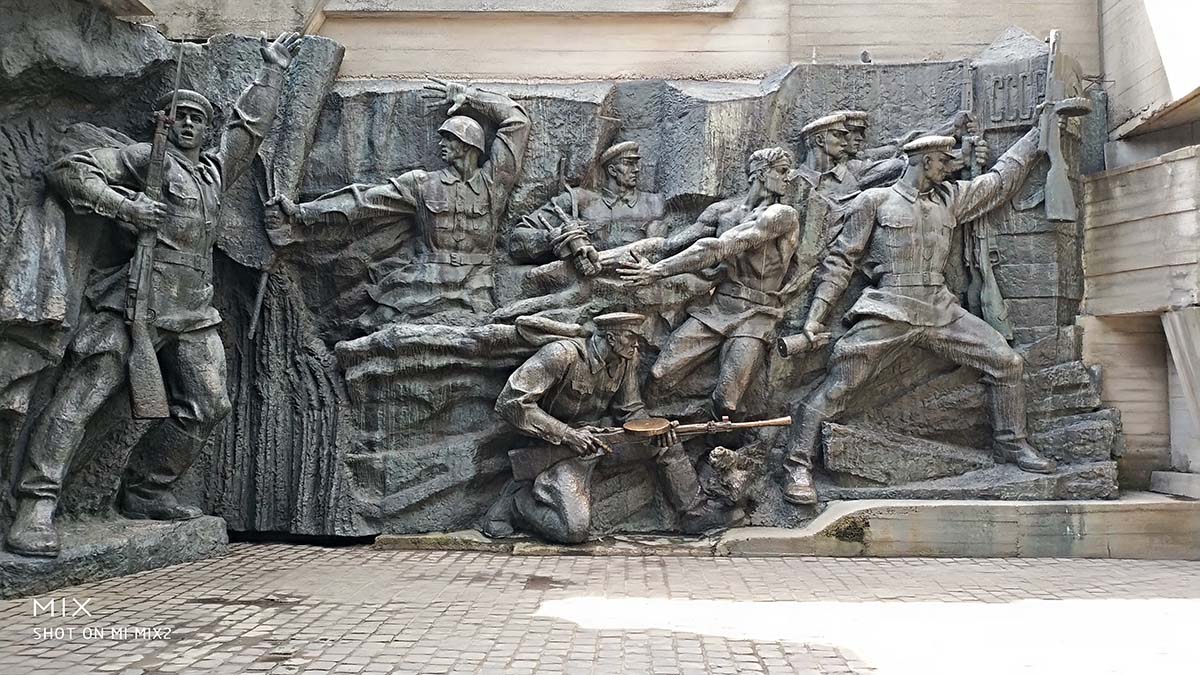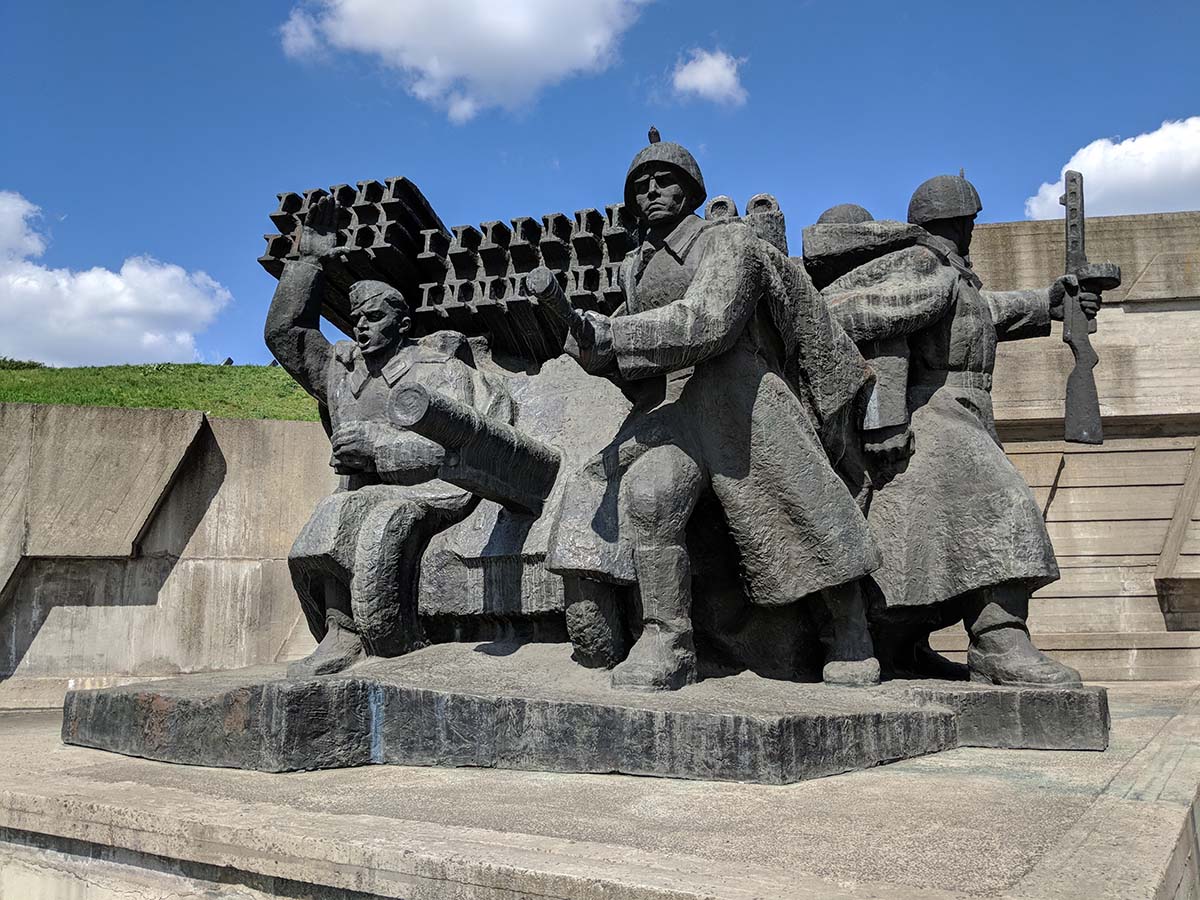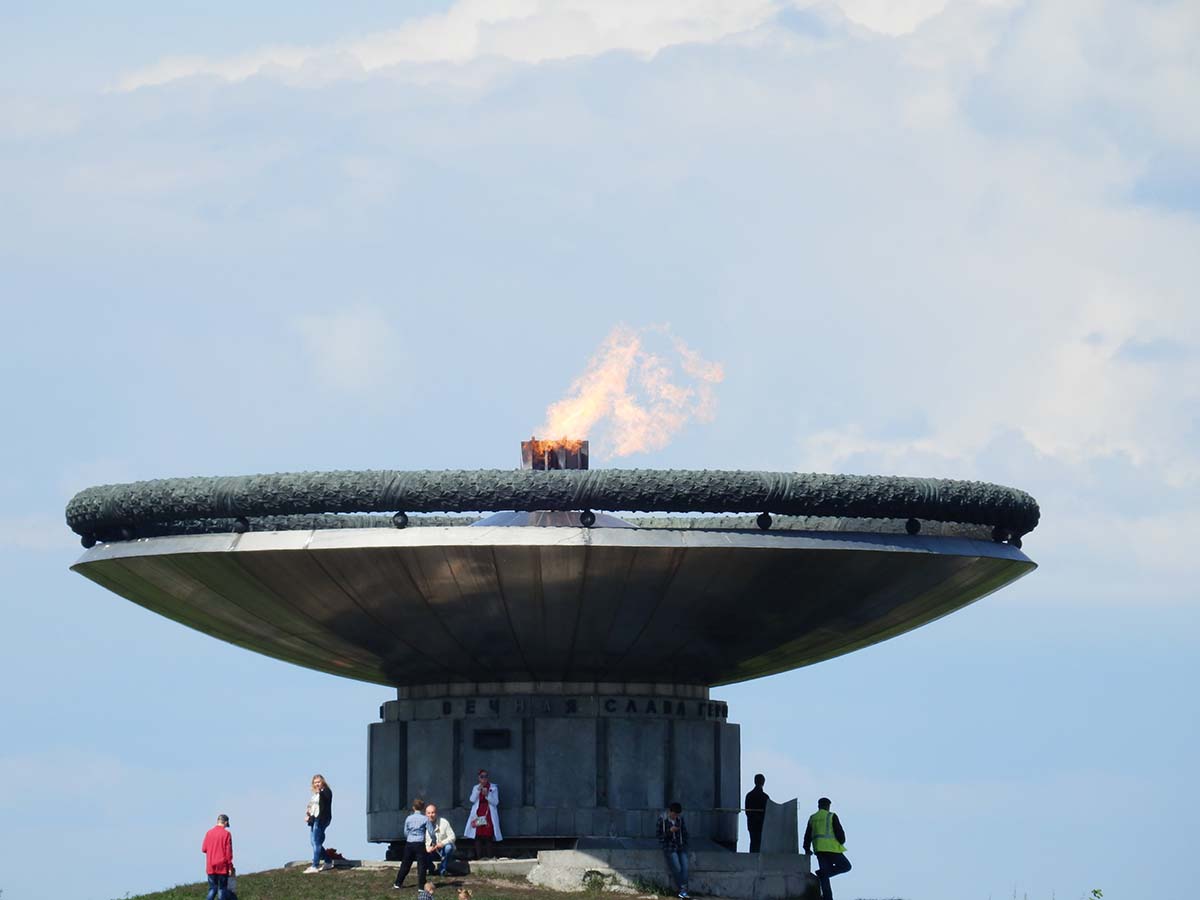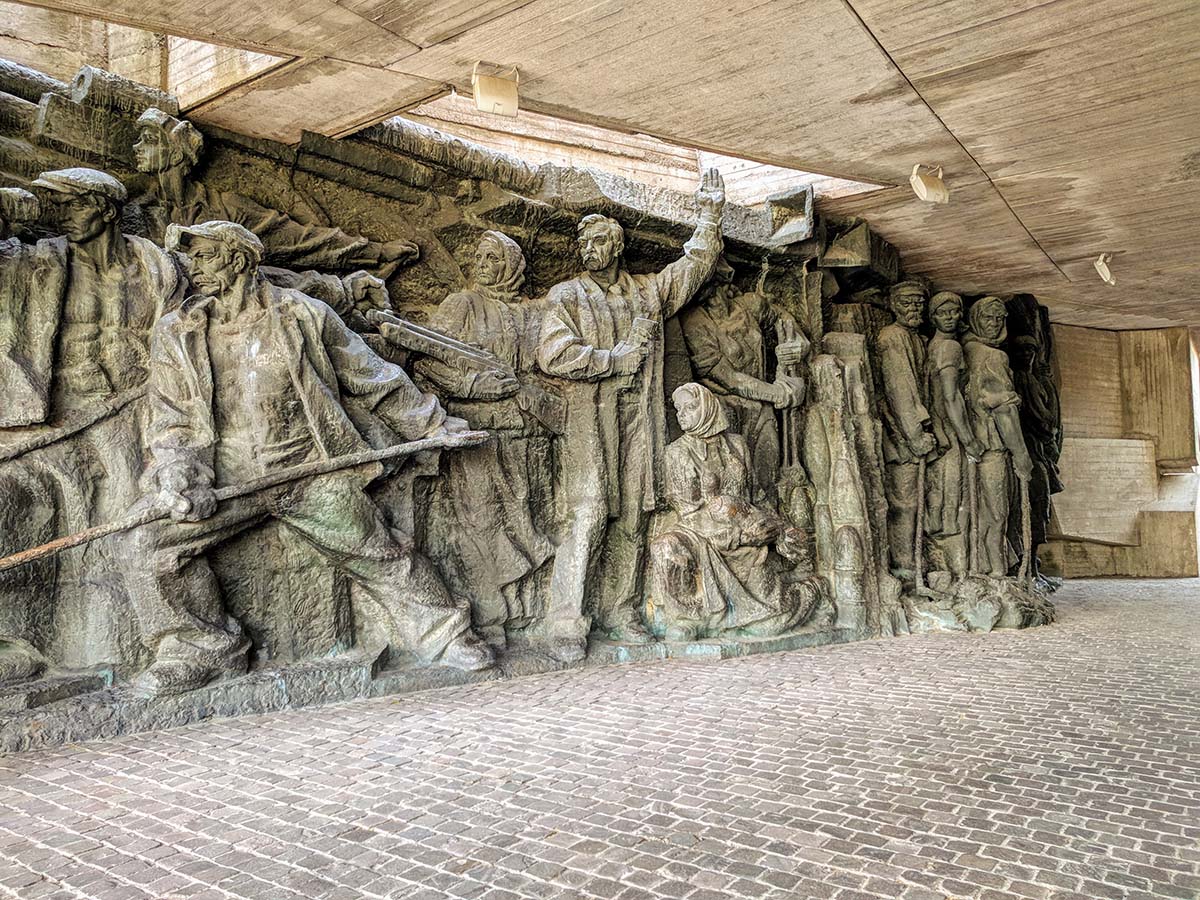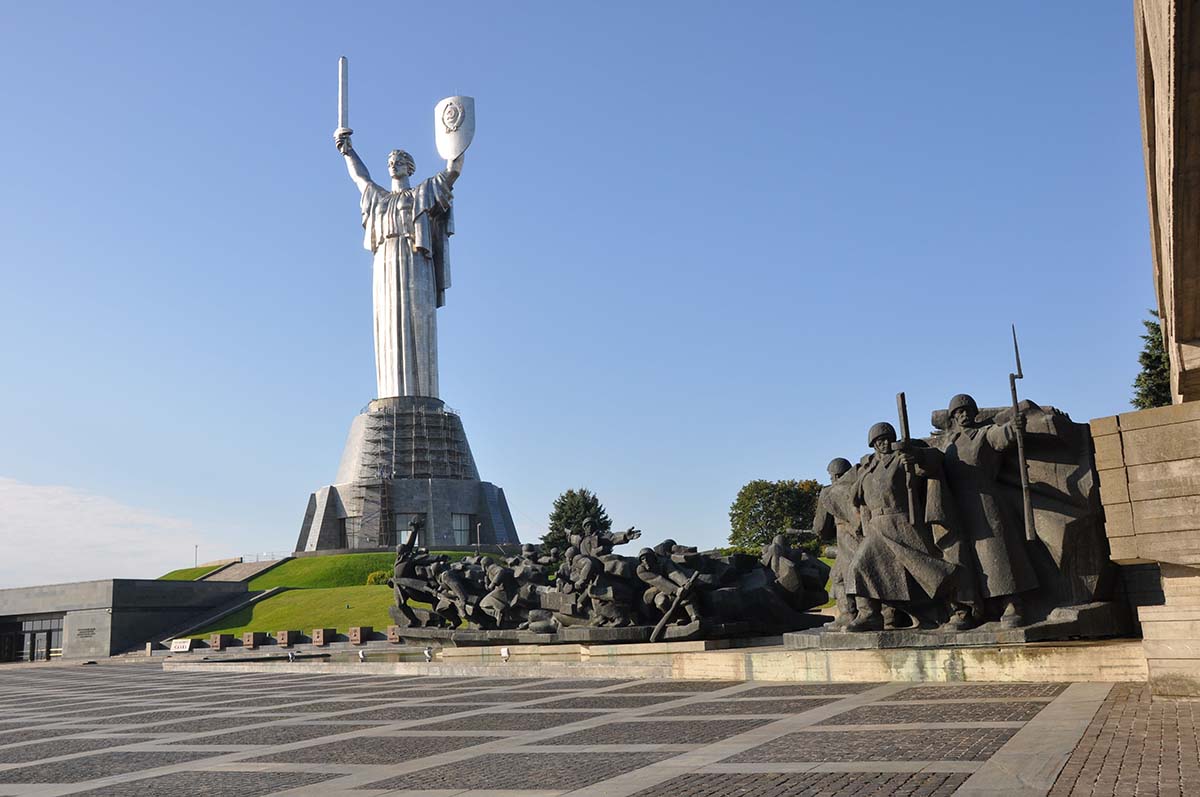The memorial complex occupies 10 hectares on a hill on the right bank of the Dnieper near Pechersk Landscape Park. It contains a giant bowl of the Eternal Flame, an exhibition of military equipment from the Second World War, as well as the post-war years (exhibition of military equipment from Afghanistan), Museum of Local Conflicts, Alley of Hero Cities and Museum of the Great Patriotic War in the statue Motherland.
A front alley runs along the slopes of the Dnieper, which leads to the main entrance gallery leading to the square and the museum building. The gallery’s sculptures represent the heroic defense of the USSR border from a German attack, the horrors of the German occupation, partisan struggle, the labor feat of the home front, and the battle for the Dnieper. These are the sculptural compositions “The First Border Battles”, “The Unconquered”, “Heroic Underground Soldiers”, “Heroic Partisans” and “Rear to Front”. On the main square of the memorial there is a sculptural group “Transfer of Weapons” and a bronze composition “Heroic Deeds of Soviet Soldiers”. Blocks with the sacred soil of the hero cities are installed in the retaining wall – this is the alley of the hero cities. The memorial complex was designed by Giprograd together with Ukrprojectstalconstruction. The main contractor is Kievgorstroy-4. The founding date of the complex is considered to be 1974, and it was opened on May 9, 1981 by General Secretary Leonid Ilyich Brezhnev, the head of the Soviet state.
Where is the memorial complex located?
Lavrskaya street, 24
